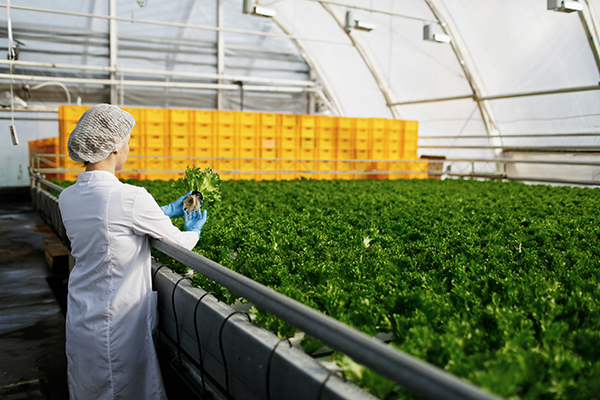When Temperatures Rise, Keep Food Safety Top of Mind
Summer brings a welcome increase in business for many restaurants, catering services, and event venues. It certainly did for the restaurant that I used to manage. With outdoor dining, festivals, weddings, and seasonal traffic, foodservice operations often experience their busiest stretch between Memorial Day and Labor Day. And the warmer weather creates ideal conditions for bacteria to grow quickly.
In our restaurant, it was even more of a challenge because our back kitchen was not air-conditioned. With the heat at the peak of summer often reaching the high 80s, our back kitchen would often top the 100-degree mark.
The Centers for Disease Control and Prevention does note that foodborne illness rates tend to spike during summer months. Keep in mind these rates are heavily influenced by consumer food preparation, and the average consumer does tend to prepare food outside more during the summer, which is away from refrigeration and water sources that are important for handwashing and general cleanliness. Anecdotally, it also seems that most tend to neglect to use thermometers when grilling or barbequing, which also contributes to this increase in foodborne illness rates.
That doesn’t mean that those of us in foodservice are off the hook. While the spike in foodborne illnesses during the summer is influenced by consumers, warmer temperatures create ideal conditions for bacteria to grow rapidly, and busy kitchens may find it harder to maintain strict time and temperature controls. And for those kitchens that have poor or no air-conditioning, like the back kitchen at the restaurant I managed, it is even more problematic. We also tend to see an increase in off-site and outdoor catering requests during the summer, which are always challenging for food safety, just as they are for the average person grilling outdoors at home. For foodservice operators, now is the time to double down on best practices to protect your customers.
…Maintaining proper temperatures is one of the most effective ways to prevent foodborne illness. Cold foods must be kept at 41°F (5°C) or below, while hot foods must stay at 135°F (57°C) or above.
Maintaining proper temperatures is one of the most effective ways to prevent foodborne illness. Cold foods must be kept at 41°F (5°C) or below, while hot foods must stay at 135°F (57°C) or above. Use calibrated thermometers regularly and ensure holding units and refrigeration equipment are functioning correctly, especially on those hot days when they’re under more strain.
Remind staff that the “danger zone” between 41°F and 135°F is where bacteria multiply rapidly. Even short exposures, such as during delivery, prepping, or buffet service, can be risky if not closely monitored.
If you’re offering outdoor dining or catering for off-site events, take extra precautions. Transport perishable items in insulated containers with ice packs or refrigeration units. At events, ensure you have safe food handling stations with handwashing access, and always cover food to protect it from insects and environmental contaminants.
With staff turnover often higher in summer, especially with seasonal hires, consistent hygiene practices can slip. Conduct brief, regular refreshers on handwashing procedures, glove use, and staying home when sick. Providing accessible handwashing stations and fully stocked hygiene supplies can go a long way in helping to improve proper food safety practices and helping employees to maintain compliance with identified standards.
Encourage a culture where safety comes first. I know this is something we seem to include in most of our blogs, but it is vital to ensuring proper food safety in your establishment. Empower your team to speak up if they see something concerning, and reward attention to detail.
Now is a great time to revisit your food safety plan and ensure staff are trained and procedures are up to date. Consider a mid-season check-in to evaluate what’s working and what might need adjustment during peak operations. Risk Nothing.
READ MORE POSTS
Changing Climate: The Unseen Impact on Food Safety
In June, I was asked to participate in the Allinfoodz podcast, put on by a colleague, Dr. Amit Sharma, at Penn State University. One of the points Dr. Sharma wanted to discuss was the impact of climate change on food safety, which is something I was certainly aware of, but not something I had done much research on. However, when preparing for the interview and podcast, it was interesting to learn more about the relationship between the two.
Thawing Food with Food Safety in Mind
There comes a time in almost every foodservice operation where you must thaw food. Yes, I know there are those operations who have moved to fresh products only and don’t have a freezer in-house, but I am willing to bet that is more the exception than the norm. I am almost sure that anyone reading this blog who works in a foodservice operation can regurgitate what methods are acceptable to thaw food per the FDA Model Food Code. In case you don’t recall, I will discuss them briefly, but I wanted to spend some time covering these requirements a bit more in-depth – so you not only know WHAT to do, but the WHY we do it that way.
Addressing Major Food Recalls in Your Business
It seems like every year we have a large-scale food recall that reminds consumers and foodservice operators about the importance of food safety. Not that we need reminded, but it certainly puts the topic in the headlines again. Last year, it was the onion recall. This year, it may very well be the Jiff peanut butter recall, of which we are in the midst of. At the time of the publishing, we are starting to learn more about a potential hepatitis A outbreak linked to strawberries. If you have not been impacted by either of these recalls in your personal or business life, I would be surprised.
Sanitation, Sanitation, Where Art Thou?
Continuing the theme I picked up on a few months ago, discussing common causes of foodborne illness, I’d like to focus this blog on cross contamination, more precisely sanitation. Sanitation is another issue that employees don’t often do at home, so they discount the importance of it in the food production environment. That is to say that they have never made someone sick at home because they only clean their countertops and they have likely never sanitized their kitchen, so why is it so important in a foodservice facility?










